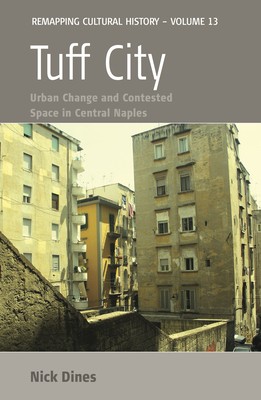
- We will send in 10–14 business days.
- Author: Nick Dines
- Publisher: Berghahn Books
- ISBN-10: 0857452797
- ISBN-13: 9780857452795
- Format: 15.2 x 22.9 x 2.1 cm, hardcover
- Language: English
- SAVE -10% with code: EXTRA
Reviews
Description
During the 1990s, Naples' left-wing administration sought to tackle the city's infamous reputation of being poor, crime-ridden, chaotic and dirty by reclaiming the city's cultural and architectural heritage. This book examines the conflicts surrounding the reimaging and reordering of the city's historic centre through detailed case studies of two piazzas and a centro sociale, focusing on a series of issues that include heritage, decorum, security, pedestrianization, tourism, immigration and new forms of urban protest. This monograph is the first in-depth study of the complex transformations of one of Europe's most fascinating and misunderstood cities. It represents a new critical approach to the questions of public space, citizenship and urban regeneration as well as a broader methodological critique of how we write about contemporary cities.
EXTRA 10 % discount with code: EXTRA
The promotion ends in 17d.18:19:13
The discount code is valid when purchasing from 10 €. Discounts do not stack.
- Author: Nick Dines
- Publisher: Berghahn Books
- ISBN-10: 0857452797
- ISBN-13: 9780857452795
- Format: 15.2 x 22.9 x 2.1 cm, hardcover
- Language: English English
During the 1990s, Naples' left-wing administration sought to tackle the city's infamous reputation of being poor, crime-ridden, chaotic and dirty by reclaiming the city's cultural and architectural heritage. This book examines the conflicts surrounding the reimaging and reordering of the city's historic centre through detailed case studies of two piazzas and a centro sociale, focusing on a series of issues that include heritage, decorum, security, pedestrianization, tourism, immigration and new forms of urban protest. This monograph is the first in-depth study of the complex transformations of one of Europe's most fascinating and misunderstood cities. It represents a new critical approach to the questions of public space, citizenship and urban regeneration as well as a broader methodological critique of how we write about contemporary cities.


Reviews